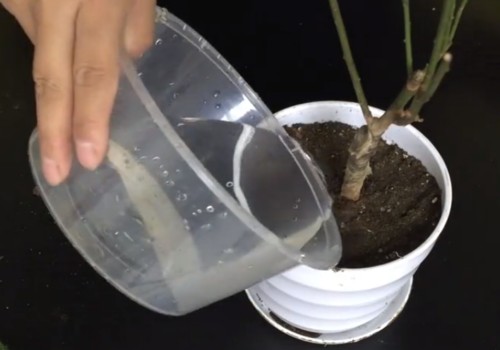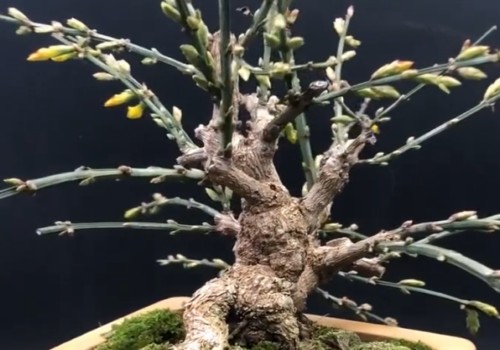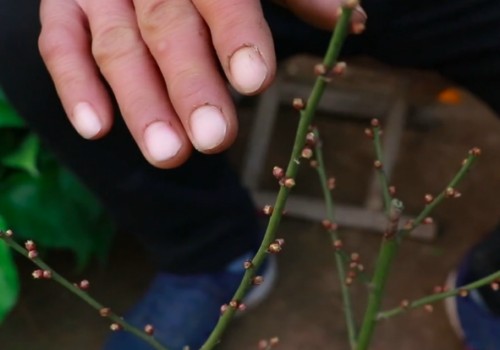How to raise family potted plum blossoms
Plum blossom has been deeply loved by the public in our country since ancient times, and its unyielding spirit has been praised by many writers and writers. Plum blossom is a kind of beautiful and fragrant plant, which can not only be planted as an ordinary potted plant, but also be made into bonsai works. As a family cultivation, because we do not have the superb skills of bonsai masters, so can only be raised as ordinary potted plants. So, how to raise family potted plum blossoms?

For family potted users, it is generally not a problem to feed plum blossoms. But if we want to raise it well, let it blossom more and beautiful, or very fragrant, then we need to pay more efforts, but also need to master certain methods and skills. Let's take a look at how Xiaobian family potted plum blossoms are raised.
1. Reasonable arrangement
In order to raise plum blossoms well at home, we must choose a location that is more suitable for growth. Generally, the selected location is required to have sufficient light and smooth air circulation, because plum blossoms prefer light and good air environment. Therefore, the conservation environment of potted plum blossom must be good, to meet its growth conditions, so the position of potted plum blossom must be reasonable.
Second, scientific watering
Although the plum blossom in the growing period and flowering period of water consumption are relatively large, but at the same time it is also very afraid of waterlogging, with the characteristics of waterlogging. If there is water in the basin, the plant is more likely to have rotten roots. Therefore, we usually watering must be appropriate, not too much, with the basin soil "do not dry or dry will water thoroughly" as the principle.
III. Appropriate fertilization
Plum blossoms prefer fertilizer, in addition to adding some base fertilizer in the basin, the original growth period can also be maintained every 2 times to apply dilute fertilizer to meet its growth needs; some phosphate fertilizer can be applied before flowering to promote the formation and differentiation of flower buds. Since plum blossom is a flowering plant, it is bound to consume a lot of nutrients during flowering, so we must remember to topdressing in time after flowering to promote plant growth, and some organic fertilizer can be embedded in the bottom of the basin.
4. Pruning in time
Pruning of plum potted plants is generally carried out after the end of flowering every year, and timely pruning can save a lot of nutrients for plants, which is very beneficial to promote plant growth after anthesis. The key point is to truncate the old and weak flower branches and keep 2-3 buds on each flower branch. And the retained buds grow outward as far as possible, which can avoid the formation of cross branches in the later stage and affect the appearance of potted plants. But the pruning object of plum blossom is not limited to this, for the emergence of old and weak branches, parallel branches, overlapping branches, opposite branches, long branches, over-dense branches and other bad forms of branches should be pruned.
Fifth, turn the basin regularly
Plum blossoms in the form of potted plants, or ordinary potted plants, or bonsai, generally need to be treated once after 1-2 years of potted cultivation. But the opportunity to turn the pot must be grasped, usually after flowering. However, it is not recommended to replace all the old soil at once, which will make the plant take longer. A more scientific approach is to replace the old soil of 1DB 3. At the same time, it also needs proper pruning, mainly cutting withered branches and pruning old roots. Then add some new basin soil that is fertile and loose, permeable and permeable.
Time: 2019-05-27 Click:
- Prev

Spring is not in bloom. What's going on?
Spring is not only the peak growing season for primrose, but also the season for its flowering. If we want the plant to grow vigorously, blossom and brilliant, we must provide it with a suitable maintenance environment, and at the same time do a good job of maintenance and management. But if the spring does not blossom
- Next

How to spend the winter with bonsai plum blossoms
Plum blossom usually blossoms in winter and spring, because it blossoms very fragrant and lovely, so for ordinary users, it is often more suitable for family potted cultivation. But in the eyes of bonsai masters, plum blossoms are good materials for making bonsai.
Related
- Fuxing push coffee new agricultural production and marketing class: lack of small-scale processing plants
- Jujube rice field leisure farm deep ploughing Yilan for five years to create a space for organic food and play
- Nongyu Farm-A trial of organic papaya for brave women with advanced technology
- Four points for attention in the prevention and control of diseases and insect pests of edible fungi
- How to add nutrient solution to Edible Fungi
- Is there any good way to control edible fungus mites?
- Open Inoculation Technology of Edible Fungi
- Is there any clever way to use fertilizer for edible fungus in winter?
- What agents are used to kill the pathogens of edible fungi in the mushroom shed?
- Rapid drying of Edible Fungi

